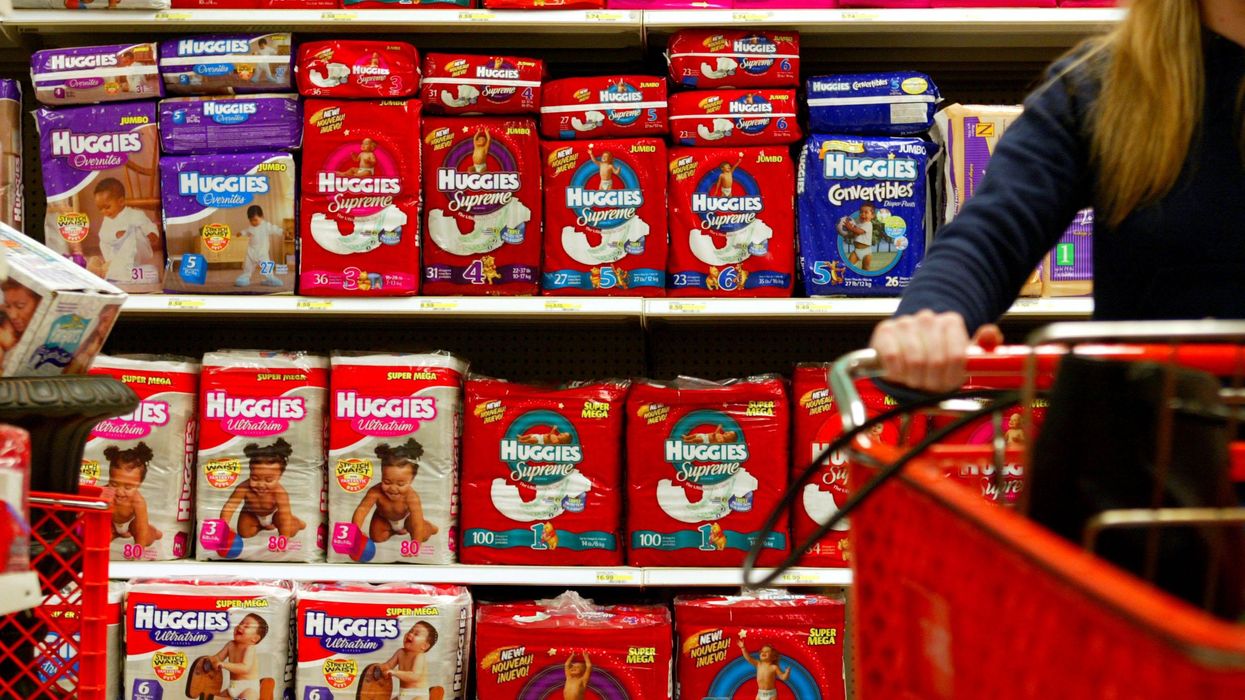(CNN) -- The share of children in poverty fell by nearly half last year, thanks mainly to the enhanced child tax credit, according to Census Bureau data released Tuesday.
Some 5.2% of children were in poverty in 2021, down from 9.7% the year before, based on a broader alternative measure developed by the Census Bureau. The Supplemental Poverty Measure, which began in 2009, takes into account certain non-cash government assistance, tax credits and needed expenses -- addressing a major flaw in the official poverty rate, economists say.
The supplemental poverty rate for children was the lowest on record since the measure began. Without the enhanced child tax credit, the rate would have only fallen to 9.2%. Some 5.3 million people were lifted out of poverty because of the credit.
Overall, the supplemental poverty rate was 7.8% for 2021, down from 9.2% a year earlier.
That compares with the official poverty rate, which was 11.6% overall in 2021, not statistically different than a year earlier. The official poverty rate for children was 15.3% -- the widest gap between this rate and the supplemental measure since the latter began in 2009.
However, poverty among the elderly rose to 10.7%, up from 9.5%, according to the supplemental measure. This is likely because a larger share is on fixed incomes that aren't keeping pace with inflation, according to the Census Bureau. Still, Social Security kept 26.3 million people, the majority of them senior citizens, out of poverty.
Also, median household income in 2021 was $70,800, not statistically different than a year earlier, even as inflation started to soar last year. This follows a 2.9% decline in median income in 2020, the first year of the Covid-19 pandemic and the first statistically significant drop since 2011.
While the overall number of workers didn't change, the number of full-time, year-round workers increased by 11.1 million. However, the inflation-adjusted median earnings of those workers decreased 4.1%, as higher prices overtook nominal gains in earnings, the Census Bureau said.
And households at the lowest income level -- the bottom tenth of the ladder -- saw their incomes decline 4.4%, even though more lower-wage workers returned to the labor market last year and have generally experienced faster average wage growth.
Federal relief efforts also helped drive down the uninsured rate to 8.3% in 2021, down 0.4 percentage points from a year earlier and among the lowest on record. Some 27.2 million Americans did not have health insurance at any point last year, a reduction of 1.1 million people in 2020.
Federal pandemic relief measures
The supplemental poverty measure has taken on increased importance in recent years, particularly during the Covid-19 pandemic when Congress approved multiple relief efforts to help Americans weather the economic storm unleashed by the virus.
As part of the $1.9 trillion American Rescue Plan Act that passed in March 2021, Congress enhanced the child tax credit for one year, beefing up payments to $3,600 for each child up to age 6 and $3,000 for each one ages 6 through 17, for lower- and middle-income families. For the first time, half the credit was paid in monthly installments from July through December, while parents could claim the other half when they filed their 2021 taxes this year.
As part of the credit's enhancement, more low-income parents became eligible for the full amount because lawmakers made it fully refundable.
The payments were sent to between roughly 35 million to more than 36 million families, depending on the month. A total of more than $93 billion was distributed, according to the Internal Revenue Service.
The child tax credit, in particular, had a significant impact on reducing hardship among families with kids, studies found.
"We know how to fight poverty, and it's not super complicated," said Elizabeth Lower-Basch, director of income and work supports at the left-leaning Center for Law and Social Policy, known as CLASP. "It's about giving people the resources that they need to meet their and their families' needs."
Critics of the enhanced child tax credit, as well as other stimulus measures that Democrats approved early last year, argue that they helped spur skyrocketing inflation. That's the main reason why West Virginia Sen. Joe Manchin, a moderate Democrat, prevented his party from extending the enhanced credit beyond last year.
In addition to beefing up the child tax credit, lawmakers approved a third round of stimulus payments last year, this one worth up to $1,400 per person. The IRS issued more than 175 million third-round payments totaling more than $400 billion through December 31. Some 8.9 million people avoided poverty because of stimulus payments, according to the Census Bureau.
Also, lawmakers extended a $300 federal boost to weekly jobless payments and two other key pandemic unemployment benefits programs until early September 2021. Most Republican-led states and one governed by a Democrat, however, terminated at least one of the programs earlier in the year.
Also, as part of a 2020 Covid-19 relief measure, states are not disenrolling low-income Americans from Medicaid in exchange for receiving additional federal matching funds during the public health emergency. Nearly 80 million people were enrolled in Medicaid in December 2021, compared with just under 73 million a year prior, according to the Centers for Medicare and Medicaid Services.
The share of people covered by Medicaid increased 0.9 percentage points, the Census Bureau found.
The American Rescue Plan Act also made the federal Affordable Care Act subsidies more generous and available to more people, particularly those in the middle class. This expanded assistance helped prompt an additional 2.8 million people to sign up for coverage under a special enrollment period last year, though it did not drive a statistically significant change in marketplace coverage.
Gains may not last
The advances in poverty reduction, however, are not expected to last this year since lawmakers did not extend the enhanced child tax credit beyond 2021, and they are not expected to approve any additional stimulus checks or other boosts to the social safety net.
The absence of the monthly child tax credit payment in January led to an estimated 3.7 million more children in poverty that month, according to the Center on Poverty & Social Policy at Columbia University. The child poverty rates rose to an estimated 17% in January, up from 12.1% in December, when the last monthly installment was delivered.
While the job market has remained robust so far in 2022, high inflation has taken a toll on many Americans. For most people, wages are not keeping pace with the increased cost of living.
"Though there were more jobs in 2022, families were certainly more squeezed by rising prices," said Elise Gould, senior economist at the left-leaning Economic Policy Institute. "And so the disappearance of this child tax credit would have hurt more."
This story has been updated with additional information.
The-CNN-Wire
™ & © 2022 Cable News Network, Inc., a Warner Bros. Discovery Company. All rights reserved.


















































